How to Maintain Battery Health on a Part-Time Off Roader
What to know about the battery in your crawler/mudder/buggy
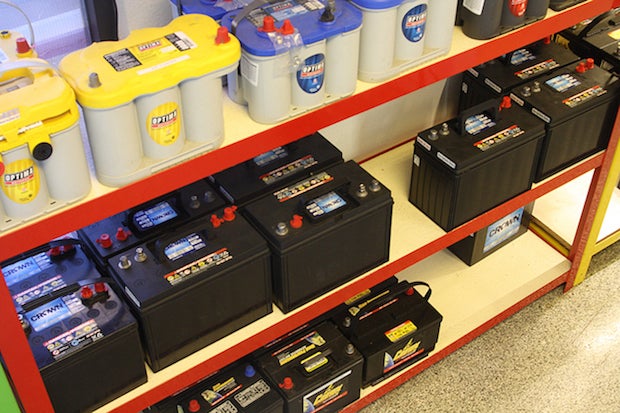
We've all been there: you parked your tube-frame/custom rust/bobbed and nosed/whatever's clever crawler, sand buggy or side-by-side for the winter, but when you try to fire it up on the first day of clear trails, the battery is F-L-A-T. What happened?
The classic excuses flit through your mind: "It was charged when I parked it!" or "I turned everything off." "I disconnected the stereo." "Did I remember to flip the battery thingy?" "It wasn't that cold," and this gem, "that battery's brand new!"
Battery Questions, Expert Answers
Batteries are like a stray dog: 99% of the time, with a little food and a scratch behind the ear, they'll be loyal for life, but 1% of the time, they'll bite you right in the keyster. The flat-battery savants at Off-Road.com got together with a few experts in 12-volt power - people who know how to take care of the power well in your four-wheeler - and we asked the questions you should have. What's the deal? Can my battery catch a cold? Are fancy batteries (like an Optima) going to last longer? Can I recharge a flat battery? Can I leave a battery plugged in on a charger when the truck is parked? Which came first, the battery or the charger?
Our experts are exactly that: industry professionals who know the inner workings of the batteries behind your starter, the dune lights and cranking the CB to 11. Jim McIlvaine is an engineer with OPTIMA Batteries. Jeff Schwen and Chris Hodges are the brains behind Deep Cycle Battery in El Cajon, Calif. Abe Hernandez repairs high-end Airstream trailers and motorhomes (and their wiring). We compared core facts of battery use (battery pun intended), maintenance, and a few things you can do so you're not the guy running around the campsite with a Schlitz in one hand and his (jumper) cable in the other.
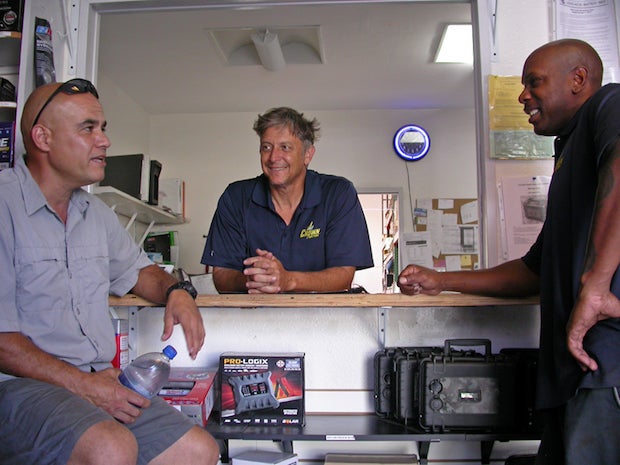
How does part-time use of a vehicle affect batteries differently than daily use?
"When a vehicle is used for hobby purposes," explained OPTIMA's Jim McIlvaine, "... the vehicle is likely in storage for longer periods of time, and would benefit from a maintenance charger for those storage periods. Daily use can give the vehicle's charging system enough of an opportunity to keep a battery properly maintained without needing a maintenance charger."
"... But that isn't always the case. Alternators are designed to maintain batteries near a full state of charge, not recharge deeply discharged batteries. Even if that vehicle is driven long enough to fully recharge a battery, it will place a tremendous strain on the alternator to do it. If the vehicle isn't driven long enough to allow the alternator to maintain the battery, the battery may experience declining voltage levels over time, which can lead to a cycle of discharged batteries and jumpstarts, until either the battery or alternator fails."
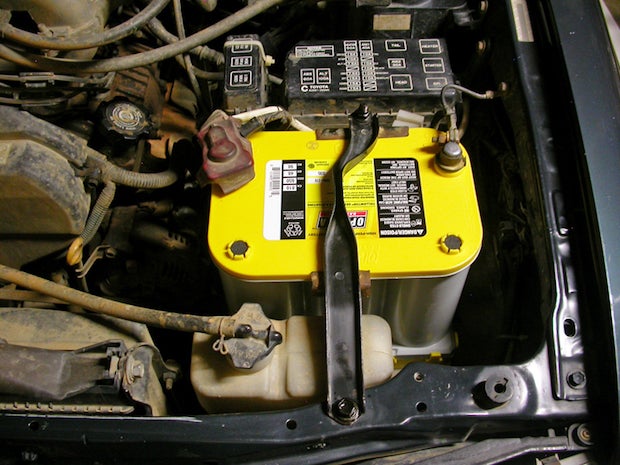
Abe Hernandez was more circumspect. "If you let a battery sit, it goes down. However, hobby cars, buggies and older rigs shouldn't draw as much power when sitting as a new vehicle because older vehicles have fewer systems and computers - if any. It's also a lot easier to disconnect the battery for a hobby-use vehicle. You can even bring the battery inside the house during the winter, and put it on a maintainer."
Hernandez continued. "A vehicle you use every day charges every day - batteries last longer when they're used. Use it or lose it. On the other hand, every time you start a vehicle, it's hard on a battery. That start-stop-start stresses the electrical system - charge and discharge, over and over. Modern vehicles also consistently draw more power from the battery to power memory and processors, so newer vehicles NEED that regular use to stay ahead of discharge."
When does a vehicle battery shift from "regular use" to "parked too long?"
"Once a battery is manufactured and finishes its initial charge process, it is always moving closer to the end of its lifespan as a consumable product," stated McIlvaine. "Proper maintenance can prolong this lifespan, but the discharge rate and how it impacts lifespan really depends on the specific application... An old pickup may have a 25-milliamp parasitic draw and only gets driven on the weekends to a cabin 60 miles away. That battery may last far longer than a battery in a new SUV that has a car alarm and satellite-based tracking that draws 100-milliamps, sees daily use, but only for a five-minute commute to work and back, which may not be long enough to allow the alternator to keep the battery properly maintained."
Jeff Schwen from Deep Cycle Battery expanded on that. "Essentially, when your use of the vehicle is not in a natural drive/charge cycle, the battery isn't either. It's the non-use discharge over time - if the vehicle and battery are parked, they're discharging. 'Any' long is too long."
How would a motorist notice that their battery is discharging too much between uses?
"A slow starter might be the definitive symptom," Schwen quickly noted. "It's the easiest for anyone to notice, and obvious to someone who isn't paying attention. Weather conditions are a good warning sign too, because a battery's function is affected by temperature. Pay attention to battery condition during excessive cold or heat."
McIlvaine added, "It's good practice to use a quality battery maintenance device on any vehicle battery that doesn't see regular use, but once again, it really depends on the application. The best place to start is understanding what the parasitic draw is on a vehicle. This can be measured relatively easily with a multimeter... For example, a Group 35 REDTOP is a 44 amp-hour battery. If you had a 50-milliamp draw, you would be discharging your battery at a rate of 1.2 amps per day (.050 x 24 hours). That means your battery would be completely discharged in about 36 days (44 amp-hours/1.2 amps) if it was not being maintained at all. Those calculations assume the battery is fully charged when the car is parked (most are not) and these timeframes can be shorter in hotter climates and longer in temperate climates. Most vehicles also need batteries that are well above a 0% state of charge to start."
What environmental factors affect battery life? Temperature? Moisture? Humidity? Vibration and shaking?
Chris Hodges from Deep Cycle Battery laid out the factors. "The happy zone for batteries are what with what people call 'mild climates'. For instance, San Diego is good for batteries, but Ocotillo kills them. Humidity does not affect battery life as much as temperature, but can affect how a wet battery 'sweats'. Counter to what you would think, humidity makes a wet battery lose water faster. Say you're in Louisiana - you'd need to check the water in a wet battery more.

OPTIMA's McIlvaine expanded on Hodges' comment. "The extreme heat often does the damage that manifests itself when the weather turns cold, and batteries are called on to crank longer to start a vehicle. When storing batteries, cool, dry locations are ideal. Storing them directly on concrete floors will not hurt them."
McIlvaine added, "We've talked a lot about proper voltage maintenance and that is really the single most important factor in proper battery life. Beyond that, high vibration/impact applications can be very demanding. OPTIMA's SPIRALCELL design makes them up to 15 times more resistant to internal damage from vibration than traditional flooded products, but there are also other things to consider in such applications. A battery should always be secured in a vehicle by some means other than the terminals. If batteries slide around in their trays or end up being held in place by the battery cables, this can place a tremendous strain on the terminals and cause permanent damage to a battery."
"Vibration is probably the next biggest factor in a battery's life," agreed Hodges. "Off-road is hard on them. Actually, use in boats is more abusive than off-road. Well, I guess a boat is off-road, but you get me. That's why you see so many AGMs and OPTIMA-style spiral-core batteries in the desert and in powerboats. Their design is better for surviving the vibration that kills normal 'flooded' or 'sealed' maintenance-free batteries. Then again, some 'sealed' and maintenance-free batteries have vibration plates in them now - they're getting better."
Is there any difference in the maintenance needs of classic "sealed"/maintenance-free batteries versus spiral-cell?
Jeff Schwen was blunt about this one. "We recommend you use the same techniques, and the same maintainers - the point is to do it. Don't neglect the battery."
"If someone considers a 'classic' lead-acid battery to be one that can have distilled water added to it, then that is the one significant difference," began OPTIMA's McIlvaine. "OPTIMA batteries are completely sealed, so there is never any need to add water. Maintenance is similar for both flooded lead-acid batteries and an OPTIMA SPIRALCELL: focus on maintaining proper voltage levels. ... All lead-acid batteries can experience sulfation, so keeping batteries fully charged whenever possible can help minimize this."
"Keep in mind, most batteries sold today (even flooded lead-acid batteries) are referred to as 'maintenance-free', meaning consumers are unable to add water to them. That is really a misnomer, because all batteries need some form of maintenance: regular charging. As batteries age, their internal resistance increases. That means a new battery can accept and deliver current more efficiently than an older battery. That's why we always recommend any applications that use more than one battery (in series or parallel) always use batteries that are identical in age, size and type. Using dissimilar batteries can shorten the lifespan of both batteries, as one may be constantly overcharged, while the other is constantly undercharged."
Speaking of two-battery systems, what's the point?
Deep Cycle Battery's Hodges answered. "Two batteries wired in parallel share the workload. It's like two tanks of gas fueling one engine at the same time. The vehicle draws from both batteries, which it slows down the discharge time, which doubles the amp-hours you have for the vehicle to use. Two 12-volt batteries wired in parallel raise the amp-hour, but not the voltage."
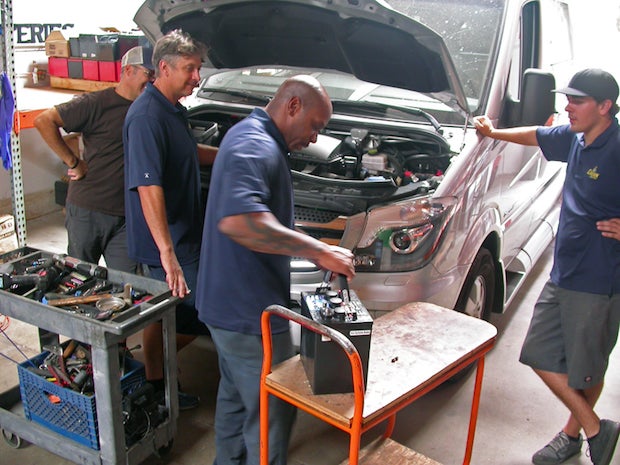
"Now, two batteries wired in series will double the voltage, but the amp-hours stay the same if the cells in the batteries are the same." Hodges indicated the Mercedes vans one of their clients uses for small-RV rentals: "In the case of this application, two high-end six-volt deep-cell batteries in series (therefore producing 12 volts) provide more overall amp-hours than one big 12-volt because those particular six-volts had bigger cells than the single 12-volt's."
"Whenever you're talking about connecting batteries, then you'd better talk about big cables too. All cables have specific reasons for use. You'd use a two-gauge/two-ought cable for wiring battery to battery, because its thickness most closely matches the plate construction and battery bars inside the battery, which evens out the flow from plates and cells and wire to the other battery, balancing the batteries. If you're hooking up an amp or winch - something with big draw - we'd suggest four-gauge wire. The size of the wire determines the heat generated in both the wire and the electronics the wire carries power to. Small wires give more resistance (less efficient power transfer), which heats up wires and equipment.”
What can gearhead/motorist/'froader do in the garage to preserve/protect the battery in their hobby rig?
Jeff from Deep Cycle Battery commented first. "Well, the bottom line is 'Don't forget about the battery,' - don't let it sit. Then, get a battery maintainer. They're called 'maintainers', 'float chargers', 'trickle chargers', whatever, and their job is to keep the battery topped off - a little charge, all the time. Be sure you get the right battery maintainer. For instance, one designed for powersports applications, with smaller batteries, will have a hard time keeping up with a big 12-volt deep-cycle battery. Read the box, then read the instructions. Another one - Abe mentioned it earlier - is for folks in cold and hot regions to take the battery out of the vehicle and bring it in the house when it's not needed in the vehicle. This is one of the great arguments for a heated garage. Clean up the battery and leave it on the workbench or build a little trickle-charge station in the corner of the basement."
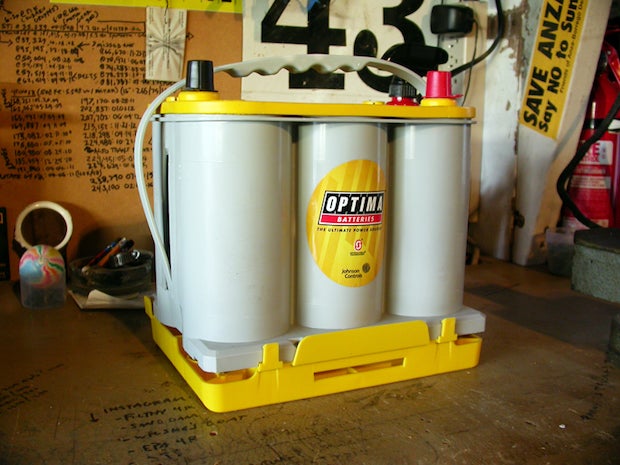
"If you don't have access to electricity where you store your vehicle, make sure your battery is fully charged and disconnected when the vehicle goes into storage. When you bring it out again, top the battery off with a battery charger (not your alternator) before putting it back into service. It's important to check the battery's voltage before your first drive no matter what storage method you use. While measuring battery voltage isn't the definitive assessment of battery health, it can alert you to issues before they become a problem."
McIlvaine continued. "When batteries are discharged below 12.4 volts and left to sit in that state (such as in storage), that's when sulfation - the formation of lead sulfate crystals upon discharge - really starts to impact battery performance and lifespan... By following proper storage techniques, you can extend the life of your battery and maximize performance."
Can you save a "dead" battery?
"One of the questions we get asked a lot is how to charge a flat battery," started Schwen. "Y'know, a sealed 12-volt car battery - the typical in-your-car battery. People want to save the one they've got before they come to buy a replacement. Can you blame them? This gives me a chance to sell them a good charger, and you'll use one of those as long as you've got a car."
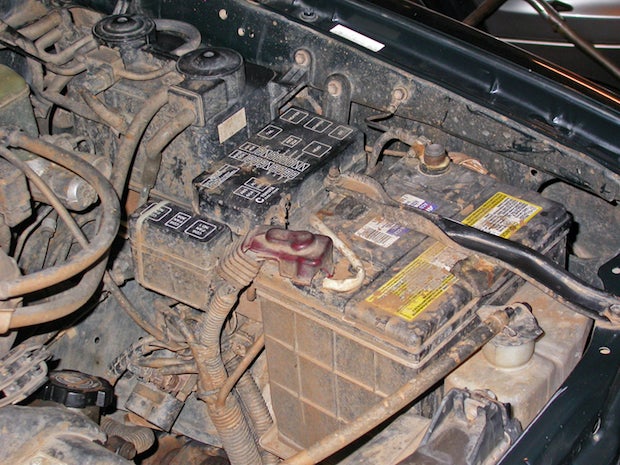
"There's always using a very-low amperage float charger over a long period of time, but it might not work because of the resistance in a dead battery. A trick that works well (as long as you have a spare set of heavy cables) is to connect a good battery to the dead battery in parallel, then charge them both. The good battery acts as a buffer for the dead battery, and keeps a smart trickle charger from shutting off because of the dead battery's low voltage. With the good and dead batteries wired parallel, you'll want to connect the charger to the positive post on the healthy battery, and the negative post on the dead battery. The healthy battery will get a good trickle charge, and the dead battery will get revived unless it's dried out or totally sulfated."
Hernandez from RV Mobile Service offered the most important piece of advice, which applies to all automotive work you do yourself. "Find an expert so you're not making mistakes stacked on someone else's mistakes. Do a little learning. Learn what wiring batteries in parallel means versus wiring in-series. Learn what each can do. Memorize what amps and volts are, and learn why they matter. I mean, there's things using electricity all over the place, and you might know nothing about them. Learn about the volts and amps in car batteries, solar panels, light bulbs - it matters. Common sense matters too: if you aren't knowledgeable, admit it and figure it out."


 Your Privacy Choices
Your Privacy Choices